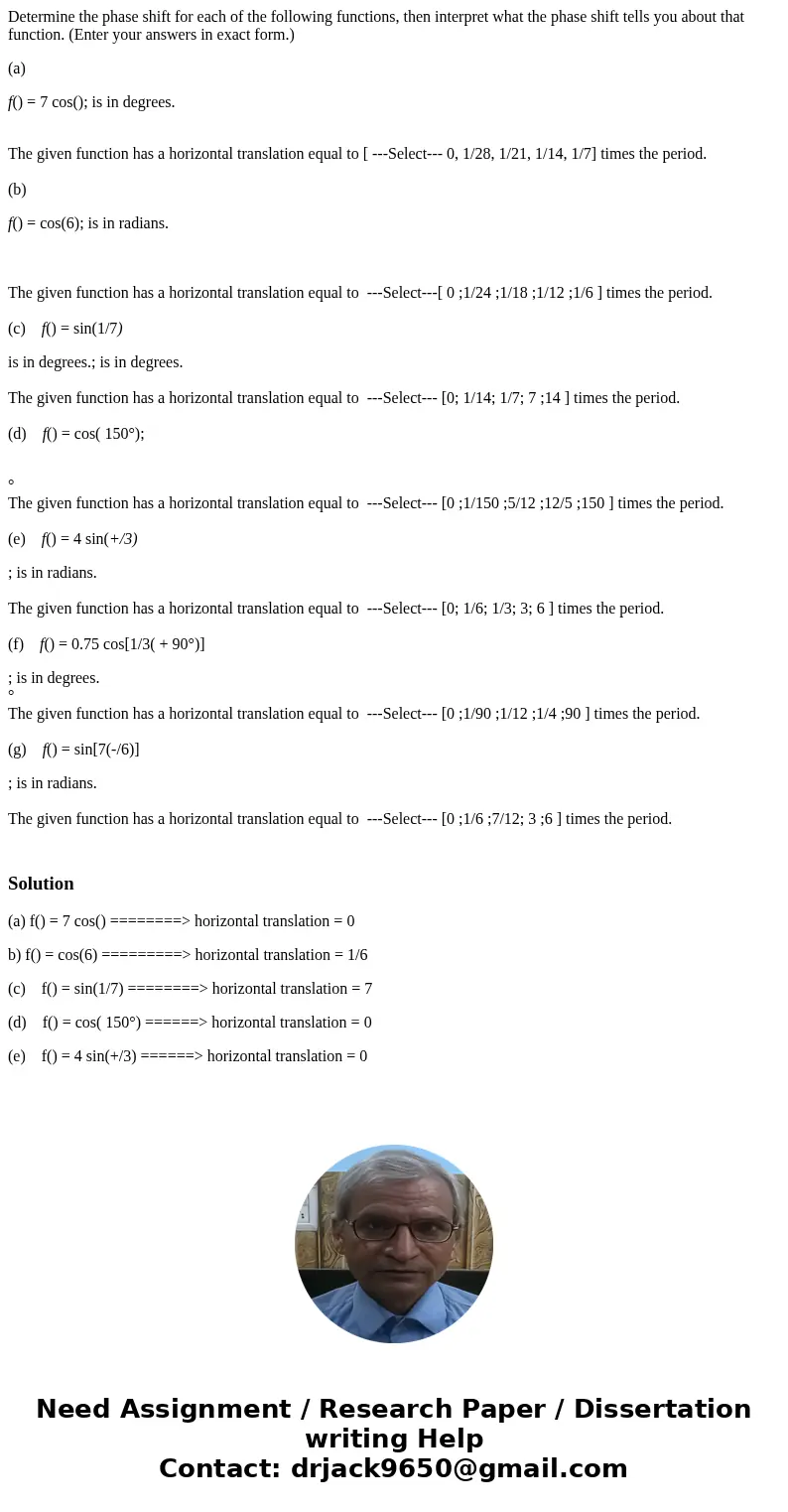Determine the phase shift for each of the following function
Determine the phase shift for each of the following functions, then interpret what the phase shift tells you about that function. (Enter your answers in exact form.)
(a)
f() = 7 cos(); is in degrees.
The given function has a horizontal translation equal to [ ---Select--- 0, 1/28, 1/21, 1/14, 1/7] times the period.
(b)
f() = cos(6); is in radians.
The given function has a horizontal translation equal to ---Select---[ 0 ;1/24 ;1/18 ;1/12 ;1/6 ] times the period.
(c) f() = sin(1/7)
is in degrees.; is in degrees.
The given function has a horizontal translation equal to ---Select--- [0; 1/14; 1/7; 7 ;14 ] times the period.
(d) f() = cos( 150°);
°
The given function has a horizontal translation equal to ---Select--- [0 ;1/150 ;5/12 ;12/5 ;150 ] times the period.
(e) f() = 4 sin(+/3)
; is in radians.
The given function has a horizontal translation equal to ---Select--- [0; 1/6; 1/3; 3; 6 ] times the period.
(f) f() = 0.75 cos[1/3( + 90°)]
; is in degrees.
°
The given function has a horizontal translation equal to ---Select--- [0 ;1/90 ;1/12 ;1/4 ;90 ] times the period.
(g) f() = sin[7(-/6)]
; is in radians.
The given function has a horizontal translation equal to ---Select--- [0 ;1/6 ;7/12; 3 ;6 ] times the period.
Solution
(a) f() = 7 cos() ========> horizontal translation = 0
b) f() = cos(6) =========> horizontal translation = 1/6
(c) f() = sin(1/7) ========> horizontal translation = 7
(d) f() = cos( 150°) ======> horizontal translation = 0
(e) f() = 4 sin(+/3) ======> horizontal translation = 0

 Homework Sourse
Homework Sourse